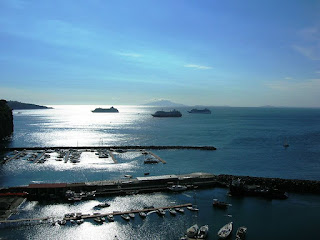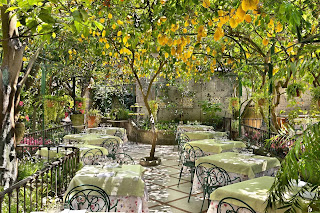See spectacular sunsets from the plain of Sorrento
A few
minutes journey from Sorrento is Piano di Sorrento, a former fishing village situated
between Sant'Agnello and Meta as you travel in the direction of Naples. Looking across the marina at Cassano, the
fishing village that forms part of Piano di Sorrento
Primarily a residential area with plenty of shops, Piano di Sorrento has a marina and two small beaches with an area free for use by the public.
The village of Piano di Sorrento became more prosperous when the supply of power and water was improved, after the creation of a railway tunnel between Vico Equense and Castellammare di Stabia. This moved the area’s economic base from just fishing, agriculture, and boat-building towards tourism.
You can now reach Piano di Sorrento from Sorrento in about five minutes by car, bus or on the Circumvesuviana railway. There are plenty of restaurants and cafes and some hotels and B&Bs in the town.
Piano di Sorrento is divided into two distinct areas, Cassano and Carotto, and above the town are the Colli di San Pietro, hills that have lovely views over the Bay of Naples and the Bay of Salerno.
In the centre of the town is the ninth century Basilica di San Michele Arcangelo and the Villa Fondi de Sangro, which is open to the public and houses the Museo Archeologico George Vallet which houses interesting artefacts unearthed from excavations in the area. You can watch spectacular sunsets from benches in the park belonging to the villa, which is on a high cliff looking out over the Bay of Naples.
The Victorian poet Robert Browning is said to have once stayed in the area and he mentions the countryside of Piano di Sorrento and other places along the Sorrentine peninsula in his poem "The Englishman in Italy".

.jpg)


%20-%20Copy.jpg)